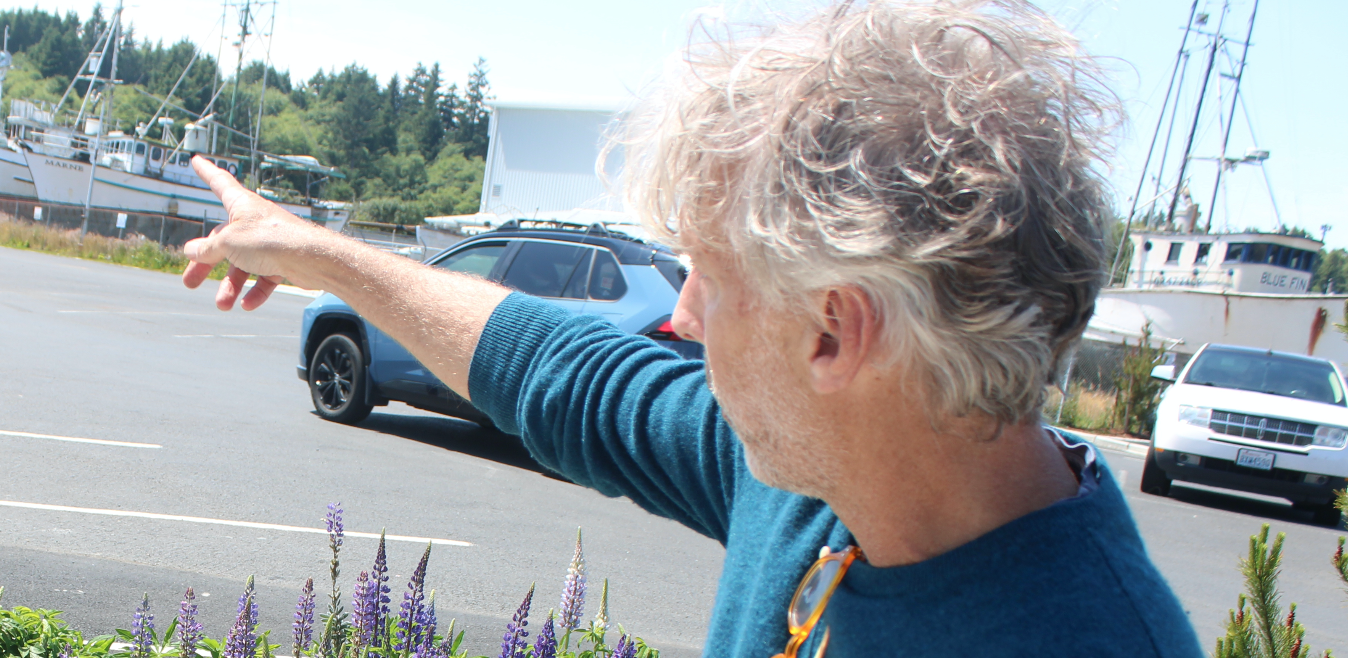Birding: The pelican brief: An update
Published 8:34 am Friday, September 27, 2024

- The American white pelican has a wingspan of about 10 feet. In breeding plumage it sports an orange knob on the upper part of the bill. It also sports a short yellowish crest on the back of the head. Adults have black primaries and outer secondary feathers.
Every so often I learn about pelicans from Chinook Observer readers. This month is no exception! Thus, I have decided to make this column a synopsis of what we know about the two species of pelicans we see in our areas, namely the brown pelican and the American white pelican.
They are magnificent, very interesting and prehistoric in appearance. Brown pelicans are being seen in large numbers from the mouth of the Columbia River from our ocean beaches, flying and feeding over Willapa Bay and from as far away as Tokeland. American white pelicans are also being sighted.
The largest groups seem to be in Young’s Bay, but I have seen as many as sixty flying over Willapa Bay, landing at low tide on exposed earth out in the bay where the water is quite shallow to rest and preen. They were also together on several occasions as a group in the bay both loafing foraging.
Brown pelican
The brown pelican is one of three species found in the Americas and one of two that feed by diving. It was exciting for me when I saw the first one from the beach. Previously in the 1990s, I had to travel down to Canon Beach to photograph and observe their behavior. They gradually expanded their range such that for many years now, we see them in the summer and fall on the Long Beach Peninsula. My sense, though, is that we are not seeing as many as we have in the past which most likely has to do with food availability or could it be that there has been a substantial increase in their favorite small fish such menhaden, mullet, anchovies, herring and sailfin mollies in their breeding areas in southern California and Mexico? Climate change may also be exerting some effect on their behavior. It is anyone’s guess!
These prehistoric-looking birds are quite agile. When flying together in tandem, the flock looks like a squadron flying up and down with the waves on the ocean. The fly low over the water’s surface to save energy in that it allows the pelicans to take advantage of what is called “ground effect” which increases lift and reduces drag. The are often seen flying in formation like geese and ducks which also helps conserve energy.
The brown pelican can be quite the entertainer, especially when it is feeding. It hunts fish from very high up in the air. Upon seeing its prey, it plunge-dives twisting and turning its body as it plummets into the water to snap up a small fish. It is the force of the impact that stuns the small fish so the bird can easily scoop up the tasty morsel. Upon surfacing it rids its bill of water so it can swallow the prey.
A few weeks ago, a large number of brown pelicans put on quite a show at the mouth of the Columbia River. A ball of bait fish had materialized close to the Megler bridge and they along with many double-crested cormorants, and gulls flew in to take advantage of some easy pickins!
American white pelican
My observations and documentation of a single American white pelican in 2010 was one of the first reports of this species being sighted on the Long Beach Peninsula. American white pelicans have been on the increase annually on the peninsula ever since. They, like the brown pelican, are usually seen during the summer and fall months. According to the most recent bird checklist of Pacific County (2024) the American white pelican is designated as hard to find, but usually seen annually. Ten years ago, it was designated as rare in our county, which means there were just over five recorded sightings at that time.
In 2019, over 200 American white pelicans were being seen fairly regularly in Young’s Bay during the late spring, summer and fall months. A few smaller flocks were being seen on the peninsula in the Chinook and Ilwaco harbors and on Willapa Bay. In 2020, a few hundred were observed gathering to feed in the shallow sloughs left behind when the tide went out on Willapa Bay. In 2024, a few flocks have been seen on Willapa Bay, some as large as 60 birds. This species, unlike the brown pelican, feeds cooperatively. They do not dive. They forage is shallow salt or fresh waters, where several of them join together in the water to herd and then scoop up their prey (Sibley, 2014; National Audubon Society, 2021). Their food consists mostly of non-game fish, amphibians and crayfish. Most people mistakenly think they feast on young salmon. Because they are opportunistic, their diet changes with water levels and prey species abundance (Cornell Ornithological Lab). Even though their preference is for fish, they will eat shrimp and other crustaceans (Ibid.).
These majestic, large white birds that fly high on the thermals and often in a V shaped formation are a sight to behold. They are the second largest birds in North America. Their wingspan measures at least nine feet and they weigh 10 to 13 pounds.
In total there are six different pelican species in the world. This species has the largest bills of all birds and can measure as long as 18 inches. Both species of pelican are magnificent to watch. Look for the American white pelicans as they fly gracefully over head in a V formation or the brown pelicans flying in a straight line close the water’s edge in an effort to conserve energy. Happy birding!






